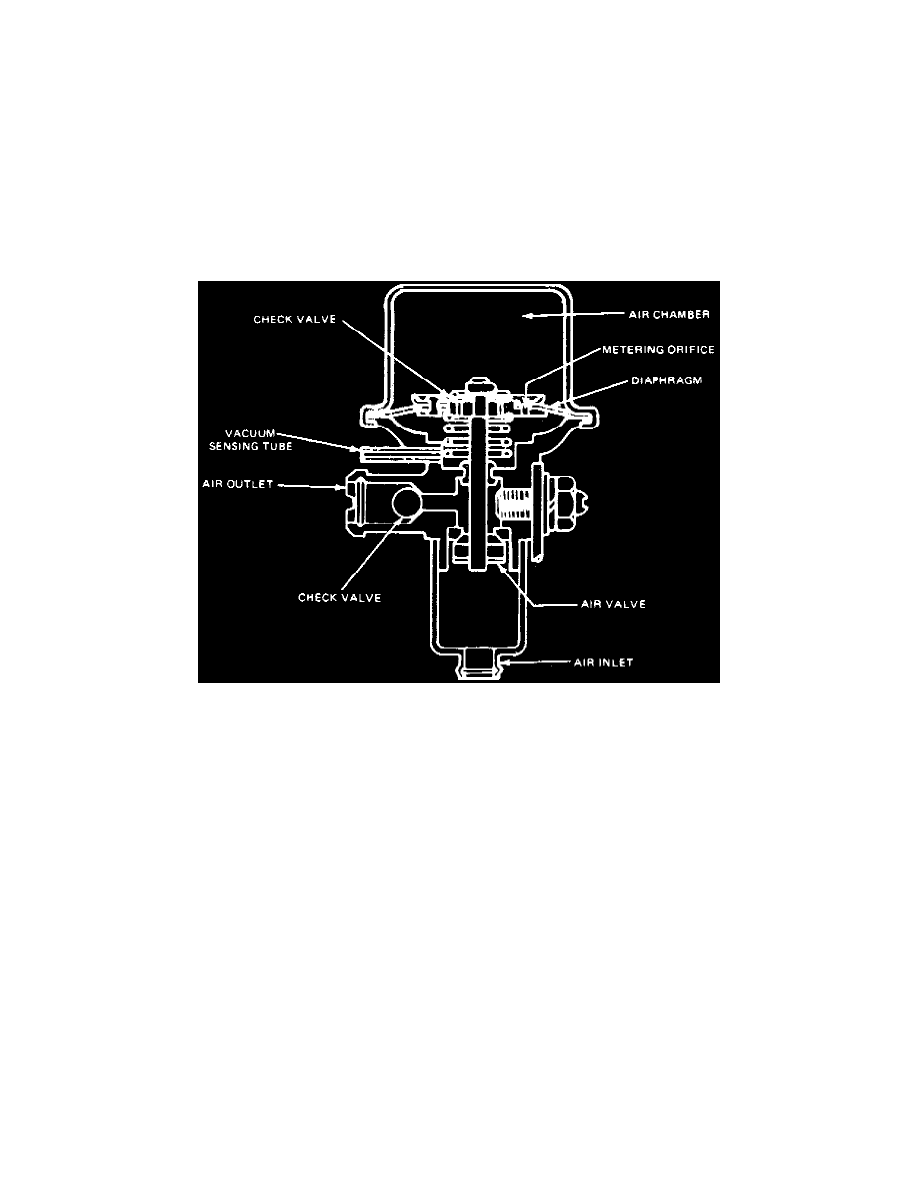Courier L4-2299cc Courier (1982)

Deceleration Valve: Description and Operation
Air Bypass Valve, Turbocharger
This valve prevents afterburning in the exhaust system during deceleration. At the start of sudden deceleration, a rich air-fuel mixture is present in
the intake manifold and is supplied to each cylinder. This rich fuel mixture does not burn completely during normal combustion and is discharged
into the exhaust system. The air supplied from the air pump to the exhaust port dilutes the unburned rich mixture to a combustible mixture, causing
abnormal burning or afterburning in the exhaust system. To prevent this, the air bypass valve senses the high intake manifold vacuum and diverts
the air. On 1977-78 models, this air is diverted into the air pump inlet. On 1979-82 models, most of the air is diverted to the air pump inlet while
some of it is diverted to the intake manifold.
Anti-Afterburn Valve
Fig. 14 - Anti-Afterburn Valve
The anti-afterburn valve, Fig. 14, is controlled and operated by intake manifold vacuum. The valve is activated when intake manifold vacuum
suddenly increases and is kept open in proportion to the amount of pressure change sensed by the diaphragm of the valve system. The diaphragm is
installed with the check valve and the metering orifice. The check valve permits air flow only from the vacuum sensing chamber to the air
chamber. Therefore, if the air in the vacuum sensing tube decreases, the check valve opens and allows air flow into the air chamber to equalize the
vacuum of both chambers. If the vacuum increases, the check valve closes and the diaphragm moves downward until the air flow through the
metering orifice equalizes the vacuum. When the diaphragm is pushed downward, the air valve opens to allow air flow to the intake manifold.
However, as the pressure is equalized, the spring returns the diaphragm and air valve to the closed position. The time required to equalize the
vacuum is in proportion to the amount of vacuum change applied to the diaphragm.
As the anti-afterburn valve completes its operation, the deceleration valve adds additional fuel to enrichen the lean mixture created in the intake
manifold by the deceleration action. This additional fuel permits more complete combustion and reduced emission contaminants.
The deceleration valve operates when all its controlling switches are closed. The accelerator switch closes the circuit when the accelerator pedal is
released. The speedometer switch closes the circuit at speeds above 17-23 mph. On 1972-74 models, the clutch switch closes the circuit when the
clutch pedal is released.
Coasting Valve
This valve adds additional fuel to the lean air fuel mixture caused by deceleration. This additional fuel insures more complete combustion and
reduces exhaust emissions.
This valve is controlled by two switches; the speedometer switch and accelerator switch. Both of these switches must be closed in order for the
coasting richer valve to function. The accelerator switch closed the coasting richer circuit whenever the accelerator pedal is in the released
position. Depressing the accelerator pedal opens the circuit. The speedometer switch completes the circuit at speeds above 17 to 23 mph.
